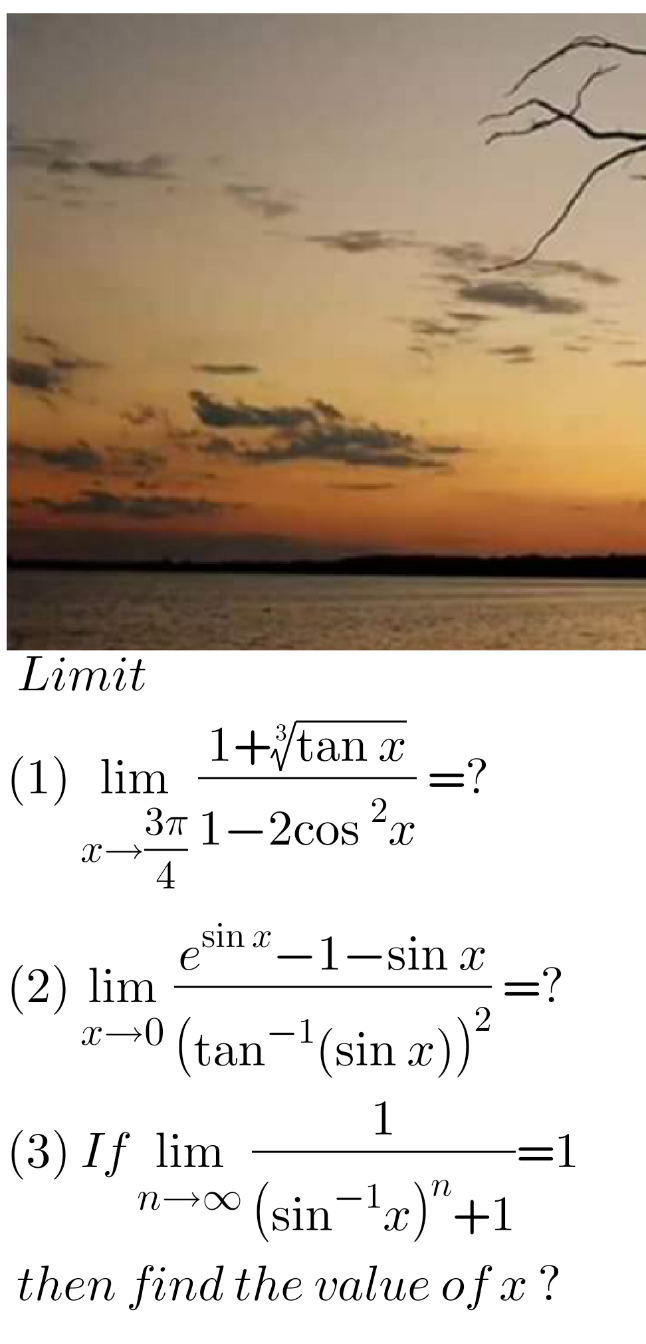
AllQuestion and Answers: Page 727
Question Number 146054 Answers: 0 Comments: 0
Question Number 146048 Answers: 1 Comments: 0
Question Number 146046 Answers: 1 Comments: 0
Question Number 146043 Answers: 2 Comments: 0

Question Number 146044 Answers: 1 Comments: 0
Question Number 146035 Answers: 2 Comments: 0
$${help}\:{me}\:{please} \\ $$$$\int\frac{{ln}\left({x}+\mathrm{1}\right)}{{x}}{dx}=?? \\ $$$$ \\ $$
Question Number 146030 Answers: 0 Comments: 1

Question Number 146026 Answers: 2 Comments: 3

Question Number 146017 Answers: 1 Comments: 0

Question Number 146013 Answers: 0 Comments: 0

Question Number 146009 Answers: 1 Comments: 0
Question Number 146004 Answers: 1 Comments: 0
Question Number 145996 Answers: 3 Comments: 0
Question Number 148416 Answers: 1 Comments: 0
Question Number 145986 Answers: 1 Comments: 0
Question Number 145982 Answers: 1 Comments: 0
Question Number 145981 Answers: 0 Comments: 0
Question Number 145979 Answers: 1 Comments: 0
Question Number 145975 Answers: 1 Comments: 0
Question Number 146001 Answers: 1 Comments: 0
Question Number 146000 Answers: 0 Comments: 3

Question Number 145960 Answers: 2 Comments: 0

Question Number 145954 Answers: 1 Comments: 0
$$\mathrm{1}+{i}+{i}^{\mathrm{2}} +{i}^{\mathrm{3}} +...+{i}^{\mathrm{99}} =? \\ $$
Question Number 145953 Answers: 1 Comments: 4

Question Number 145951 Answers: 1 Comments: 0
$$\underset{{n}\geqslant\mathrm{1}} {\sum}\frac{\left(−\mathrm{1}\right)^{{n}} }{{n}}=?? \\ $$
Question Number 145947 Answers: 1 Comments: 1

Pg 722 Pg 723 Pg 724 Pg 725 Pg 726 Pg 727 Pg 728 Pg 729 Pg 730 Pg 731
